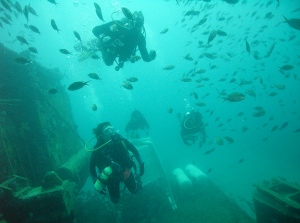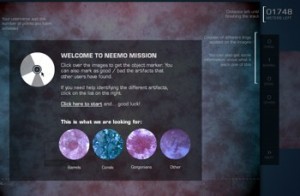In the spirit of boosting citizen science projects, we're pointing to the increasing number of opportunities for volunteers -- those with no formal scientific training -- to encourage participation in real scientific research. These projects happen both on- and offline and volunteers are asked to assist with making observations and calculations alongside scientists.
(Remember last month's story about how gamers helped AIDS researchers identify important an protein with the online game Foldit?)
In the same vein, Zooniverse, a website where you can find a number of online science projects, has kicked off a new project this week and is asking for your help.
Zooniverse has partnered with NASA's NEEMO project for a mission it's conducting over the next two weeks. Due in part to the short duration of the project, NEEMO is hoping that by opening the research up to volunteers, it will have "more eyes on the problem."
NEEMO stands for NASA Extreme Environment Mission Operations. It's part of NASA's training regime for astronauts, scientists, and engineers for the off-planetary exploration. NEEMO tries to duplicate the space environment by sending astronauts to work underwater.



